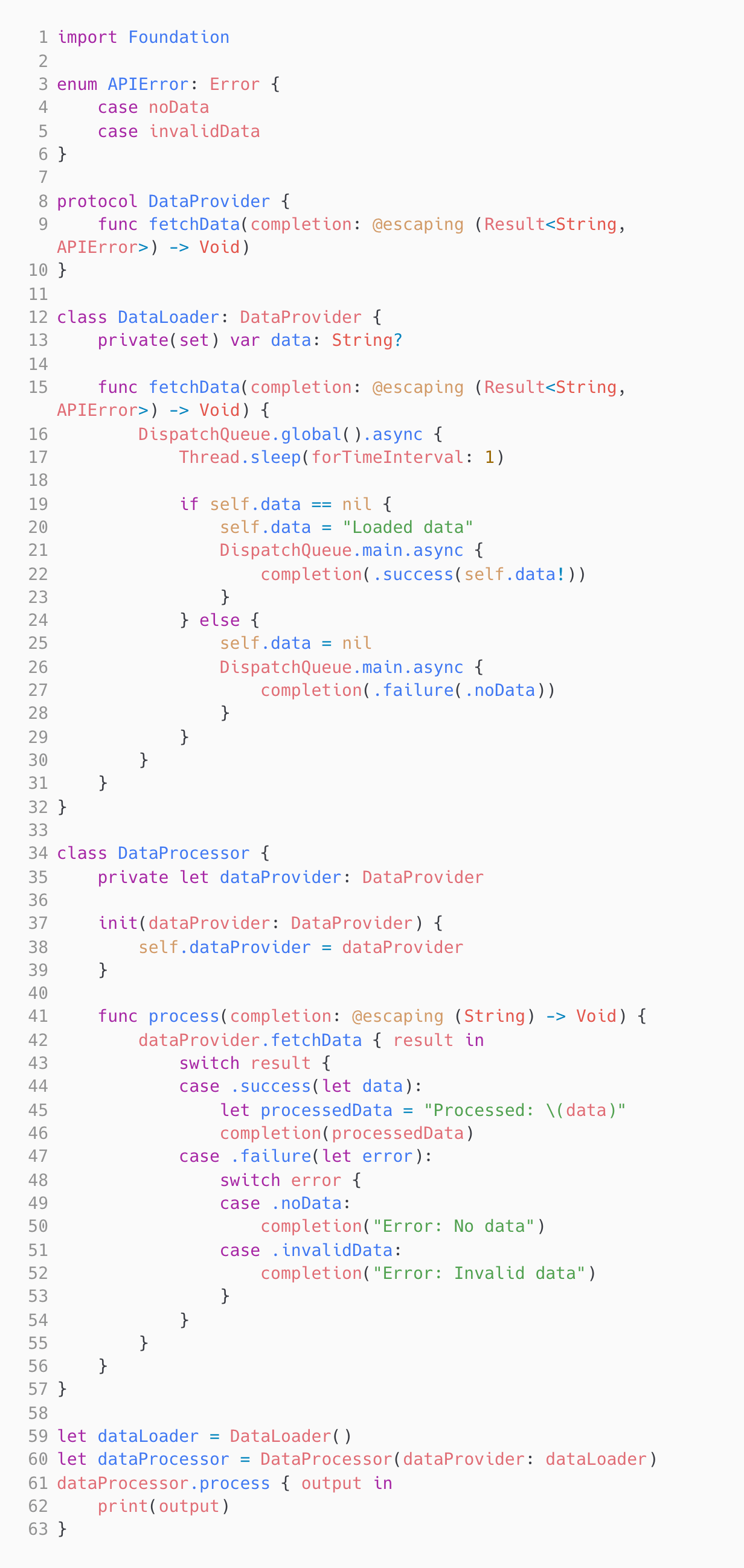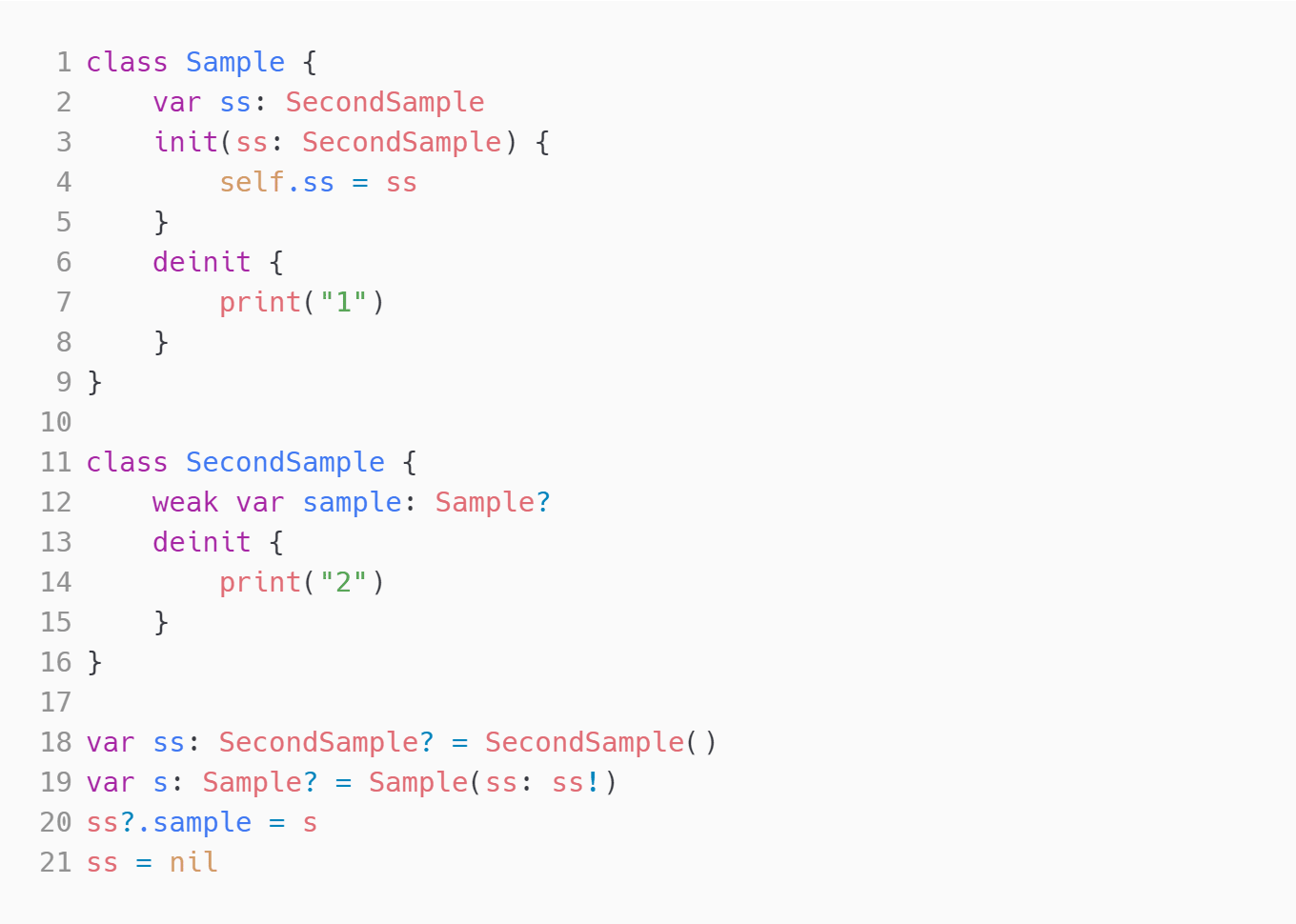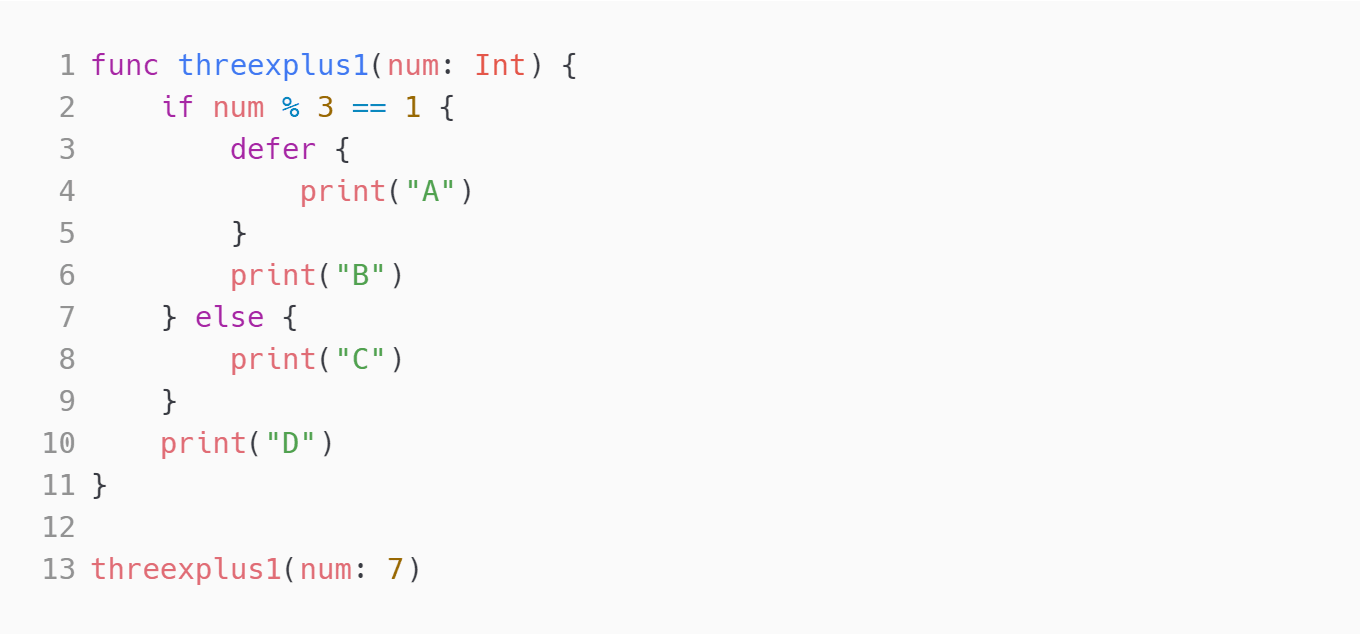Basics of Swift: Basics of Swift refers to the fundamental concepts and syntax of the Swift programming language, such as variables, constants, data types, operators, and basic control structures. This skill is measured in the test to assess a candidate's proficiency in the foundational aspects of Swift programming, which serves as a strong basis for building more complex applications.
Data Types: Data Types in Swift define the kind of values that can be stored and manipulated in variables or constants. This skill is measured in the test to evaluate a candidate's understanding of the different data types available in Swift, like integers, floats, strings, and arrays, and their usage in writing efficient and type-safe code.
Control Flow: Control Flow refers to the flow of execution within a program, determined by conditional statements, loops, and branches. This skill is measured in the test to assess a candidate's ability to effectively control the execution of their Swift code based on different conditions, making decisions and repeating actions as required.
Functions: Functions in Swift are self-contained blocks of code that perform a specific task. This skill is measured in the test to evaluate a candidate's knowledge of creating, calling, and using functions in Swift, including parameter passing, return types, and the concept of function overloading, which helps in writing modular and reusable code.
Classes and Objects: Classes and Objects are fundamental concepts in object-oriented programming. This skill is measured in the test to gauge a candidate's understanding of creating and working with classes, objects, properties, and methods in Swift, which enables building complex and organized code structures, facilitating code reuse and easy maintenance.
Optionals: Optionals represent the possibility of absence of a value in Swift. This skill is measured in the test to assess a candidate's grasp on handling optional values, unwrapping them safely, and dealing with nil scenarios, which is crucial for writing robust and bug-free code, ensuring data integrity and handling unexpected situations.
Error Handling: Error Handling in Swift is the mechanism of handling and responding to error conditions that might occur during the execution of a program. This skill is measured in the test to evaluate a candidate's knowledge of using Swift's error handling features, such as try-catch blocks, to gracefully handle errors, propagate them, or recover from them, ensuring fault-tolerant and reliable applications.
Collections: Collections in Swift, like arrays, sets, and dictionaries, enable storing and organizing multiple values into a single entity. This skill is measured in the test to assess a candidate's understanding of working with collections efficiently, including performing common operations like insertion, deletion, iteration, and accessing elements, which are essential skills in almost all non-trivial programming tasks.
Closures: Closures are self-contained blocks of functionality that can be passed around and used within Swift code. This skill is measured in the test to gauge a candidate's knowledge of closures, including their syntax, capturing values from the surrounding context, and their usage in scenarios like asynchronous programming or functional programming paradigms, which is indispensable for writing concise and flexible code.
Concurrency: Concurrency in Swift is the ability of a program to execute multiple tasks simultaneously. This skill is measured in the test to evaluate a candidate's understanding of using Swift's concurrency mechanisms like concurrent queues, dispatch groups, and async/await to write efficient, scalable, and responsive code that can handle concurrent execution and synchronization correctly.

























































